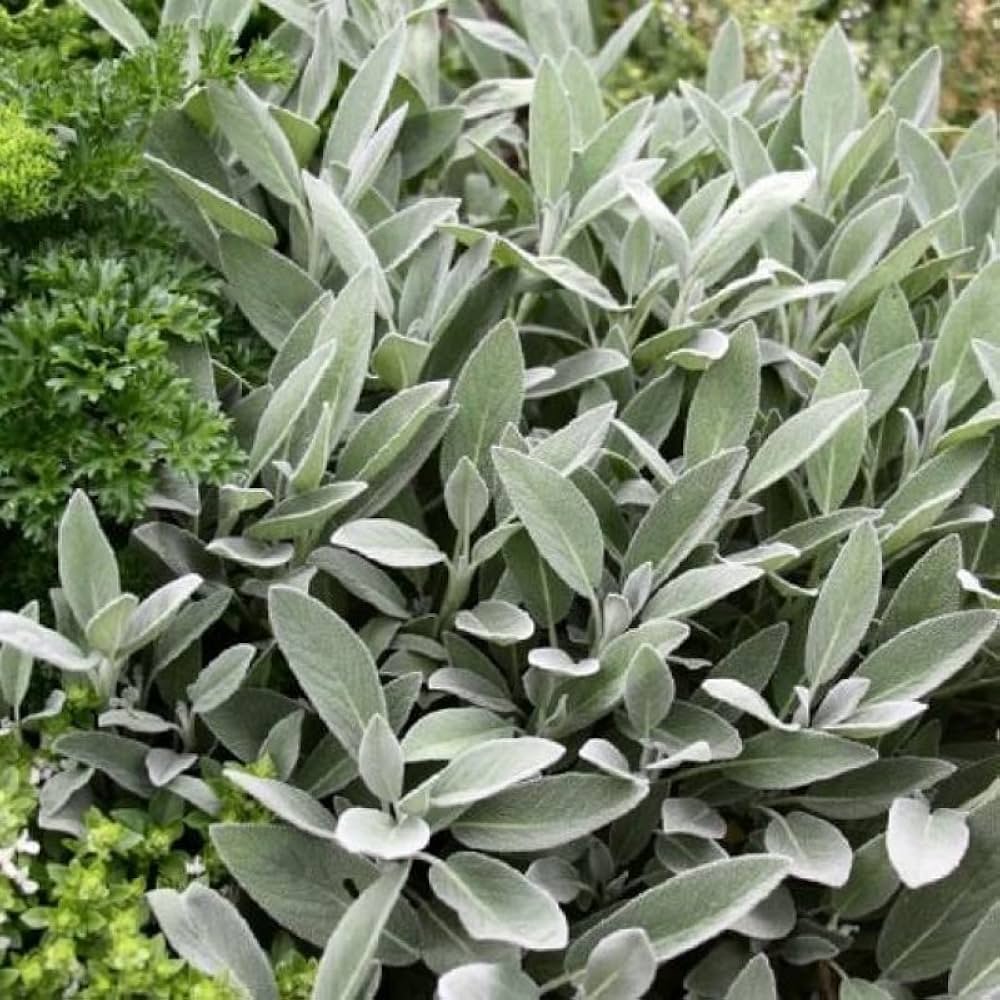
Dharaseeds
Sage Seeds (Organic)
Estimated Free Delivery between April 16 and April 19.
Secured Payment Methods
Your transaction is protected with advanced security measures to keep your information confidential
Organic Sage (Salvia officinalis) is a classic herb, prized for its aromatic leaves and versatile culinary uses. This organic variety is perfect for gardeners seeking an environmentally friendly way to grow this essential herb. Known for its distinct, savory flavor, sage is commonly used in Mediterranean and European cuisine, and its leaves are also valued for their medicinal properties.
Key Benefits
- Organic Farming: Grown without synthetic pesticides or fertilizers, ensuring that your sage is pure and eco-friendly.
- Versatile Culinary Herb: Ideal for use in cooking, sage adds depth to savory dishes, soups, meats, and stuffing.
- Medicinal Properties: Sage has a long history of use in traditional medicine, with soothing properties for sore throats, digestive issues, and more.
- Low Maintenance: Sage is a hardy perennial, requiring minimal care once established. It thrives in a variety of climates and conditions.
- Pollinator-Friendly: Sage attracts bees and butterflies, helping to support local pollinators in your garden.
Variety Features
- Plant Type: Perennial herb.
- Leaf Color: Silvery-green leaves with a slightly fuzzy texture.
- Flower Color: Purple to blue flowers that bloom in late spring to early summer.
- Height: Grows to about 18–24 inches tall.
- Hardiness Zone: Best suited for USDA Zones 4–8.
- Uses: Ideal for culinary use, herbal teas, medicinal applications, and as a pollinator-friendly plant in the garden.
Planting Instructions
When to Plant
- Indoor Growing: Start seeds indoors 6–8 weeks before the last expected frost date. Transplant outdoors when the soil has warmed and all danger of frost has passed.
- Outdoor Growing: Sow seeds directly outdoors after the last frost date, once the weather has warmed up and daytime temperatures are consistently above 60°F (15°C).
Soil & Spacing
- Soil Requirements: Prefers well-drained soil with a neutral pH. Avoid overly rich, moist soils, as sage thrives in drier conditions.
- Spacing: Space plants 12–18 inches apart to allow for proper air circulation and growth.
Germination
- Temperature: Germination is best at temperatures of 70°F to 75°F (21°C–24°C).
- Germination Time: Expect germination in 14–21 days when kept in optimal conditions.
Care Instructions
- Watering: Water the plants thoroughly after planting but avoid overwatering. Sage is drought-tolerant once established and prefers dry conditions.
- Sunlight: Sage thrives in full sun, requiring at least 6 hours of direct sunlight each day for optimal growth and flavor.
- Pruning: Regularly remove any dead or damaged growth, and trim back flower spikes once blooming has finished to encourage new growth.
- Fertilization: Sage generally requires minimal fertilization. You can apply an organic compost or balanced fertilizer in early spring if needed.
Harvesting Details
- Leaves: Harvest sage leaves when they are mature, before the plant flowers, for the best flavor. You can harvest leaves as needed throughout the growing season.
- Flower Harvesting: Sage flowers are also edible and can be used in salads or as a garnish.
- Seed Saving: Allow the plant to flower, and once the flowers are spent, collect seeds from the dried flower heads for future planting.
Culinary Uses
- Seasoning: Sage is widely used in cooking, especially in roasted meats, sausages, stuffings, and soups. Its earthy, slightly peppery flavor pairs well with fatty dishes like pork and poultry.
- Herbal Tea: Fresh or dried sage leaves can be brewed into a soothing herbal tea, known for its calming and digestive benefits.
- Garnish: The beautiful purple flowers and silvery-green leaves of sage can be used to garnish dishes or infuse oils.
Medicinal Uses
- Digestive Health: Sage has traditionally been used to soothe digestive problems like indigestion and bloating.
- Sore Throats: Sage tea or gargles can help ease sore throats and other upper respiratory discomforts.
- Antioxidant Properties: The leaves are rich in antioxidants, which may support overall health and immunity.
- Cognitive Function: Some studies suggest that sage may help improve memory and cognitive function, making it a popular herb in traditional remedies for mental clarity.
Conclusion
Organic Sage Seeds are a fantastic addition to any herb garden, offering both culinary and medicinal benefits. Easy to grow and maintain, sage thrives in full sun and well-drained soil, producing aromatic leaves that are perfect for cooking or creating herbal remedies. Whether you are using it fresh in the kitchen, drying it for later use, or growing it for its pollinator-friendly qualities, organic sage is a must-have herb for sustainable gardeners and culinary enthusiasts alike.








